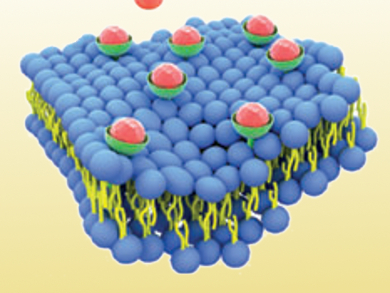Alternatives to Standard Cancer Therapies
The dreaded “C word” is not something anyone wants to hear from their doctor, but cancer is a fact of life for many people. There have been advances in treatment in recent decades, and while the absolute incidence numbers rise as populations grow (and also grow older), a diagnosis of many forms of cancer is not quite the death sentence it once was.
However, the side effects of treatments such as radical surgery, radiotherapy, and chemotherapy remain severe and often debilitating in many ways. An intriguing proposition regarding an alternative to chemotherapy is offered in the latest issue of Angewandte Chemie.
Calcification as a Drug-Free Strategy
Ruikang Tang, Zhejiang University, Hangzhou, China, and colleagues have devised a drug-free approach to cancer therapy that involves cancer cell targeting calcification (CCTC). The process is based on the fact that many types of cancer cells overexpress the folate receptor (FR). This means they can selectively take up folate molecules, which have carboxylate groups that can specifically bind Ca2+ ions. This leads to an increase in calcium ion concentration and subsequent calcification of the cancer cell. The mineral ultimately encapsulates the tumor cell and induces cell death.
The team has tested this hypothesis with the well known HeLa cancer cells and confirmed that folate can lead to CCTC efficiently and thus inhibit tumor growth. Simultaneously, the process should also preclude the spread of cancer cells, i.e., metastasis, because those same cells will be targeted by the folate and also undergo terminal calcification. Tests of CCTC in the laboratory saw a marked improvement in survival rates of mice with tumors.
Common Nutrients Instead of Harsh Drugs
Folate is a normal part of a healthy diet. While ingesting extra folates is not recommended for healthy individuals, the presence of those excess folate receptors in a cancer patient with particular tumors means any potentially harmful accumulation should not occur in the bloodstream or non-cancerous tissues. In other words, normal cells will not be damaged by the treatment, something that is certainly not the case in conventional chemotherapy, wherein the medication is rarely able to target the cancer cells and affects all cells in the body, particularly those that are dividing. This leads to the common side effects of nausea, vomiting, and hair loss, as well as more serious side effects like neuropathy, neutropenia, and kidney failure.
“Our next step is to screen more cancer target molecules and make them calcification-sensitive,” Professor Tang told ChemViews Magazine. “We expect that the ideal target molecules would induce CCTC efficiently under physiological conditions, i.e., by using blood calcium only, which will benefit its medical transformation.” He adds that the team is now beginning a collaboration with surgeons to develop this approach into a treatment for cervical carcinoma, which overexpresses folate receptors and is, therefore, a ready target for folate-induced CCTC.
- A Drug-free Tumor Therapy Strategy: Cancer Cell Targeting Calcification,
Ruibo Zhao, Ben Wang, Xinyan Yang, Yun Xiao, Xiaoyu Wang, Changyu Shao, Ruikang Tang,
Angew. Chem. Int. Ed. 2016.
DOI: 10.1002/anie.201601364




